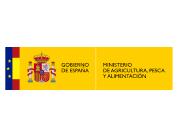
Methodological design, analysis, inventory and improvement of habitats for bats under special protection regime in quarries in the north-south peninsular gradient (QuarryBat).
MITECO
Line of action:
Terrestrial ecosystemsStatus:
FinalizadoExecution date:
2020End date:
2021Total budget:
66.374,12 €Amount of aid from the Biodiversity Foundation:
43.140,77 €The current situation of chiroptera (or bats) makes it necessary to promote actions that allow their study in potentially compatible areas, such as the limestone mining centers of the north-south peninsular gradient. Its geomorphologic and environmental conditions may provide strategic habitats for this faunal group.
The distribution of chiropterans remains largely unknown today and sampling can be a useful starting point to determine their dispersion and location in quarry environments. Likewise, the development of actions that favor their reproduction and feeding can have a positive effect on the maintenance of the different genera existing in this geographical area.
All these measures are aimed at maintaining biodiversity and ecological connectivity in anthropic environments and are set out in a protocol dossier that can be extrapolated to similar situations as a source of information exchange with the public and private agents involved in the project.
The main objective is to manage, promote and inventory suitable habitats for bats under special protection in restored and/or active quarry areas in the Basque Country, Madrid and Andalusia, promoting the connectivity of these areas with their immediate surroundings.
It has these specific goals:
- Identify suitable habitats for chiropterans in the mining centers, as well as in their immediate surroundings, in order to establish suitable work areas.
- To know the community of bats existing in the different areas of the farms and their adjacent areas in farms present in the communities of the Basque Country, Madrid and Andalusia.
- To analyse the structural and functional connectivity of bat populations between the areas of exploitation and their immediate environment.
- Improve habitats for present and potential chiropterans within the quarries based on the connectivity study carried out.
- To raise awareness of the importance, valorization and dissemination of bats in the natural environment and the potential of quarries as niches of diversity of these species through the development of a communication plan among the general public, companies in the sector and the public administration.
- Zoning of the farms according to their geomorphological and biotic characteristics.
- Sampling of chiropteran populations through different campaigns to determine the presence of these species.
- Study of the existing and potential connectivity of mining operations.
- Establishment of measures to improve the selected plots.
- Dissemination and communication of the project.
The ‘QuarryBat’ project has allowed the study of the ecological connectivity of bat populations located in mining centres in three autonomous communities: the Basque Country, the Community of Madrid and Andalusia.
In total, the project has zoned 1,374.5 ha of area susceptible to bats and sampled 19 different species potentially present in the study areas.
Based on the results, habitat improvement actions have been implemented to promote both trophic resources and shelter and nesting sites. These actions include the establishment of refuge boxes in the wooded peripheral areas of the mining centers, the construction of an artificial pond as a water resource during prolonged droughts in the Malaga quarry, and the sowing and planting of native and entomophilous plant species, in order to guarantee the trophic resources necessary for the settlement and stabilization of the chiropteran populations in these areas.
In addition, a technical
technical reference manual
aimed at the mining sector and the public administrations responsible for wildlife management, which contains valuable information on actions to improve the conservation of chiropteran populations.


Methodological design, analysis, inventory and improvement of habitats for bats under special protection regime in quarries in the north-south peninsular gradient (QuarryBat).









 back to search
back to search 